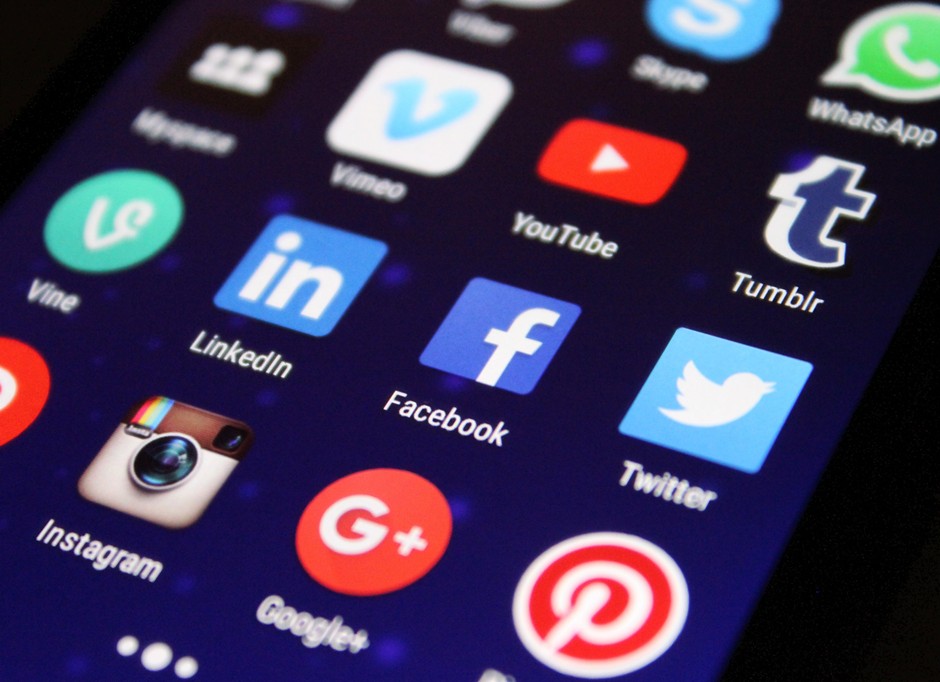The Critical Importance of Lead Validation in Internet Marketing
Lead validation in Internet marketing is the process of separating sales leads from other phone and form inquiries generated from a company’s website. Created by Straight North, an organic SEO agency, The Critical Importance of Lead Validation in Internet Marketing study indicates that, on average, about 50 percent of a company’s website inquires are not sales leads. Those non-sales inquiries consist of things such as customer service inquiries, personal phone calls and sales solicitations.
Other eye-opening statistics discussed in the study include:
- 19 percent of leads convert on Mondays and Tuesdays
- 85 percent of visitors convert on the first visit. The number drops significantly — to 10 percent — on the second visit. After the second visit, the chance for a conversion plunges to single digits
Overall, if the marketing department judges the success of its campaigns (SEO, paid search advertising, email, etc.) on inquiries alone rather than on actual sales leads, their evaluations could be overly optimistic by half. By validating leads, marketers can judge their campaigns based on sales leads, giving them an accurate picture of how well each marketing campaign is performing.
For more insight into lead validation, see the presentation below:
About the Author

Take Your Business To The Next Level By Building It Into A Brand

You may have your own business, but do you have a brand?
Branding is an important step forward for businesses. A strong brand name can make you stand out. Building a brand is important to develop a reputation. It can also help you branch out to other business endeavours.
For example, think of some of the brands you know. Levis are known for producing high-quality jeans and other casual wear. Virgin are known for their worldwide operations in a number of industries, from travel to banking.
Here are some of the most important steps to building your business into a brand.
Register Your Brand
Before doing anything else, you will want to decide on a brand name and legally protect it. This involves registering your brand name as a trademark. The two most important aspects to registering your brand name as a trademark are making sure it is available and recognizable.
You don’t want to build your business up under one name just to find out it is already taken by another business. Before building your brand up, check your brand name is available and sets you apart from other companies.
Also make it recognizable. A punchy name that people will remember is more appropriate. Nike may not have had the same success if they called themselves ‘Athletic Gear For You’.
Next, Secure Your Trademark by registering your brand name. Be sure to check your brand name availability and protect your trademark.
Use Clever Marketing
Now you have your brand name, you need to market it. Using ad campaigns can get your name out there, let customers know what you offer and start to build a reputation for yourself.
The most widely known companies use advertising just to push their brand name, as they are already known for their products. For example, think of how prominent the Coca-Cola Christmas Adverts are.
Television advertising isn’t the only way to go. Many companies now turn to internet marketing to get their name out there. Try getting your brand name onto blogs related to your field. Even just getting on social media can be a good way to create a following around your brand.
Marketing is the best way to build a buzz around your brand, so make sure to use it.
Keep Customers Happy
Customers associate brand names with the quality of products and services they provide. Therefore, it is important to make sure your brand name has a positive connotation for customers.
Make sure you practise good customer service. If a customer has a complaint, do what you can to resolve the issue in a way that will make them appreciate your brand. Sometimes refunds and free goodies can pay off, as bad customer reviews can hurt your brand image.
You should also find ways to interact with customers. Social media brings you closer to customers, and can also allow you to respond to queries. You can also post competitions and offers to get customers excited and draw more in.
Overall, you want a strong, recognizable brand name that is known for quality products and good customer service. Make use of these tips and start building your brand.
Writing a Great Headline for Your Advertisement!
There is no denying the fact that the success of an advertisement lies mostly in the headline. The headline should grab the reader by the collar and make him want to read the rest of the advertisement. The headline should be simply catchy and various key points should be embedded when deciding on the headline for the ad.
The headline should catch attention of the eye at the first glance. Words in headlines should act as tags for the advertisement. It should say it all about the content that follows. If a company is selling reasonably priced furniture, the headline of their advertisement should be “Durable Furniture for Less Price”. This headline will attract the right customers who are on a look out for durable furniture as well as low cost furniture. If the customers to be reached belong to a category that are interested in decorating their house with beautiful furniture and aren’t concerned about the price to get the right look, then the headline can be something like this: “Change How Your House Looks by Our Oriental Furniture”. Anything other than the prospects should not be included in the headline. If both men and women can use a product, both of them should be referred to in the title, missing out even one of the category is like losing a huge number of potential customers.
The title should be an instant product seller. According to a research, five times more readers read just the headline when compared to those who read the complete advertisement. So the investment is of no use, if the title isn’t good enough to sell the product. There can be a possibility that the content of the ad isn’t strong enough. All the harm can be undone by having a powerful headline.
The headline should be centered on the product and not the company that is selling the product. The customer’s interest should be reflected and he should feel that he is directly addressed. Start with “you” and not “we”. So if the client specified mentioning the company’s name, don’t start the sentence with it. For example, instead of writing “Tylenol – Solution for a Severe Cold”, write “Got a Severe Cold? Try Tylenol”. Never forget to mention the name of the product in the headline. The product name should be of top priority.
A snapshot of the benefits of the product should be given in the headline. This is an important quality of a well-phrased headline. The customers look out for advantages when he thinks of buying a product. Keywords like whiter teeth, nutritious cereals, or miraculous growth should be incorporated in the title.
If including all these factors have made the headline long, remember to write the product advantages in bold. If a visual is placed in the advertisement, it will be a good complement. As a picture can speak a thousand words. But care should be taken that the headline should say some part of the story and the visual should say the rest. Don’t repeat the headline or the picture.
Too much cleverness should not be applied to design a headline. There are nearly five hundred advertisements in a local newspaper on weekends. A regular reader reads the headings of all of them. He will be able to classify between a false heading and a genuine heading. No false promises or information should be included in the headline. Excessively smart headlines are good for award competitions, but don’t really work with the savvy customers.
The headline should give out a positive feeling to the reader. Negativity should be totally excluded as it not only creates a negative impression but the mind will also be not receptive friendly. It sometimes confuses the mind and it interprets a negative meaning of the message being delivered. Confidence should be reflected in the headline. Don’t include any doubtful words like “if” and “but”. Conditional phrases are a strict no. The sentence should be in present tense, instead of past or future.
About the Author

The proposal and the sale are miles apart
“Sounds good, send me a proposal.” How many times have you heard that? Too many. So you run back to your office, put together a proposal, send it to the prospect, and start the follow-up process (and the prayer vigil).
Or do you?
REALITY: The sale should be solidified BEFORE the proposal is written. Your proposal should be the essence of what has been decided by you and your prospect. It should solidify the sale.
How many proposals do you win – how many did you lose? If you lose way more proposals than you win, it’s much more than just the proposal. It’s the proposal process.
Count the wins. Count the losses. That’s the scorecard baby. Your scorecard. Ouch.
AND when you win proposals, how profitable are they? Are you telling your boss, “Hey let’s go in real low on this one so we can get the business, and then six months from now, boy we can really lose some money.” Ouch.
REALITY: Once you lower the price, customers expect a low price all the time.
Proposals are there because buyers think they’ll get the lowest price or the best deal by pitting one company against the other. Your job is to make yourself a winner BEFORE the proposal happens by creating conditions or terms that preclude others from either bidding or winning.
The first thing you need to do is determine if it’s a price proposal or a value proposal. If they’re going to take the lowest price only, you’re going to lose, even if you win. Because the lowest price is the lowest profit. It may even be no profit.
So the challenge is, can you create a profitability formula or a productivity formula, measured against what you do, that sets a standard for the proposal. A formula that your competition must meet or exceed regardless of initial price.
You need to convince your buyer that there’s a long term cost, not simply a short term price.
Are they are buying your price only — taking the lowest bid? If so, they only need a one sentence proposal, and you don’t need me.
Try this: – Don’t do it… at first. When someone asks me for a proposal the first thing I say to them is no. That always shocks people. And besides, proposals are a pain in the butt.
I ask the person if they were taking notes. They say, “Yes.” I say, “Well, let me just sign the notes.” I continue by saying all we really need to do is pick a date to begin. And 30% of the time the prospect will say, “You’re right.”
The other 70% of the time the prospect will insist on a proposal. But I’ve just won 30% of the business without submitting a paper. And there’s a reason for this. I have sales balls and you may not.
The reason proposals are there is to lower risk to the buyer, and potentially to lower the cost. But in the final analysis many proposals can be eliminated if your prospect feels that your price is fair, and that their risk is low.
If the risk is low and the reward is high then the answer is always obvious.
Before the decision is made, it’s important to your customer that they know what your product or service will be like AFTER it’s been delivered. This will take away all risks and all fear. And it may also take away the price-only-decision process.
The key words are: value messages on video testimonials.
Customers only buy for an hour or two, but they may use for years. So you say to your customer, “Mr. Jones, I’d like to add a clause to the proposal that insists on proof of salespeople’s claims. And so I am asking you to require five testimonials in video form so that you’ll know any claim a salesperson makes has been validated by a customer, and it’s not just a sales pitch or a proposal.”
The video testimonial is a powerful piece of support. And depending upon the quality can be the difference between sale and no sale.
2.5 thoughts on testimonials:
1. Testimonials reduce the risk of purchase.
2. Testimonials are the only proof you’ve got.
2.5 Testimonials MUST be included in every proposal.
Winning proposals are solidified by dynamic sales presentations. Proposals should be the solidifying factor, not the sales pitch. The proposal should document what has been said and agreed. The proposal should confirm the sale and all the claims you made about it. Does yours?
Your proposal process is not a regurgitation of your price list. It is not a document to see how much of your profit you can give away. It is not something you prepare to beat the competition.
Your proposal is the gateway earned business. It solidifies a value-driven sales presentation that begins or extends a relationship where everyone profits. The minute you low ball a price, you’ve gone from a relationship sale to transactional sale and the next person who low balls your price will beat you. And beat themselves.
Don’t just win the proposal.
Win the value. Win the profit. And win the relationship.
Reprinted with permission from Jeffrey H. Gitomer and Buy Gitomer.
About the Author

Build A Buzz Around Your Business And Profits Will Soar No Matter What
In the film industry, movies are products. For business owners, it is interesting and useful to consider what makes a new movie successful. How do studios today reach that incredible goal of one billion in total box office receipts? It’s quite simple; they build a buzz around the product. This is what you need to do with your product. The best recent example is Suicide Squad. Suicide Squad is Warner Bros product, and it’s just been slammed by critics. Should they care, should they be worried it’s not going to sell? Actually no, because they’ve already done their job. The marketing has built a buzz. There have been viral strategies in place for over a year. They’ve had millions of views on YouTube, and it came out as the top brand in a recent marketing event. All this points to one fact. Warner Bros have got themselves a hit, whether critics like it or not. This is a valuable lesson all business owners should learn. It doesn’t matter whether you’re selling a product of high quality, if you can establish a high demand, it will sell. How do you do this?
Social Media Marketing
If you want to build a buzz around your new product or business, you should start by looking at social media. You need to use your social media networks in two ways. You should be connecting with your customers on a regular basis, and you should be releasing content that they want to share and view. You can use each social media network in various ways. For instance, on Facebook, you can create discussion or group pages. Groups can be powerful marketing tools, particularly if you fill the group with influential members. People who your customers will trust and will want to hear from. An extra tip is to not add these people to the group yourself. Rather, you need them to join independently. This is the best way to ensure that they are an active member of the group. They will generate the buzz around your business for you.
On Twitter, it is crucial that you use hashtags, although not in every tweet. This can get annoying. At the same time, though, it’s useful to know that hashtags make it more likely for content to be shared. If your content is shared, more people will be talking about your business or your product. It is an easy way to generate more interest in your company.
Live feeds are becoming more important as well. Live feeds are often used as a backdoor into the company. You can show your customers what is happening behind the scenes and make the business more accessible. If you can do this, it could be very valuable. Customers always want to see the people behind the corporation. If you have interesting individuals working for you, it’s a great way to build a buzz.
Content

The key to great content that generates talk and publicity is to make sure that it’s targeted. You need to write and create content specifically for your target consumer. Think about the people who don’t need to be primed to buy your product. This is who the content needs to be aimed towards. You might be offering SEO services. If that’s the case, then your business is going to appeal to local and international entrepreneurs or business owners. You might also catch the interest of bloggers and website owners. Since these are your target customers, you need to think about what is appealing to them. The best way to do this is to create a context around your marketing. Business owners are probably unaware of the difficulties of SEO. By pointing things out such as Google penalties, you can persuade them to use a professional service. This is just one example of how content can get your business the buzz it needs. You will be offering your consumers the solutions to their problems.
More Than A Business Space
You should be aiming for your business venue to be more than just space. It needs to shine on the high street, particularly if you are part of a retail company. It is all about offering customers more and taking your service that extra mile. If you own a physical space as a business, creating an online buzz won’t do the trick. You have to get the customers through the door to buy and to do that you may want to look at these great tips from The POET Companies. Agencies like this know what customers want and what they’re looking for. Once you have redesigned the space, then you can start generating a buzz around it online before it reopens.
Marketing Events

We have already mentioned how the film industry uses marketing events to create a buzz. Every industry has the potential to do this, and it is a possibility that you should be looking into. A marketing event is the chance to make your company shine over other businesses. You can attract attention from investors and consumers at the same time. Obviously one of the key marketing events that you need to know about is a trade show. You can use a trade show to generate a buzz by showing off a new product or a new business model. Remember, though; trade shows are highly competitive environments. You will need to deliver something truly special to win the attention of customers and investors. One possibility is to utilize available technology. With the right tech, you can make your business seem modern and exciting. Even using older ideas could generate this effect such as 3D. 3D is fairly cheap tech these days, and it could bring your marketing into an entirely new dimension.
These are just some of the techniques you can use to create a buzz around a company or a product. As you can see, it is all about perception. If you alter the perception of your product, customers will buy anything. We have seen this time and time again in different industries. With the right marketing and promotion, you’ll always get the sale.


